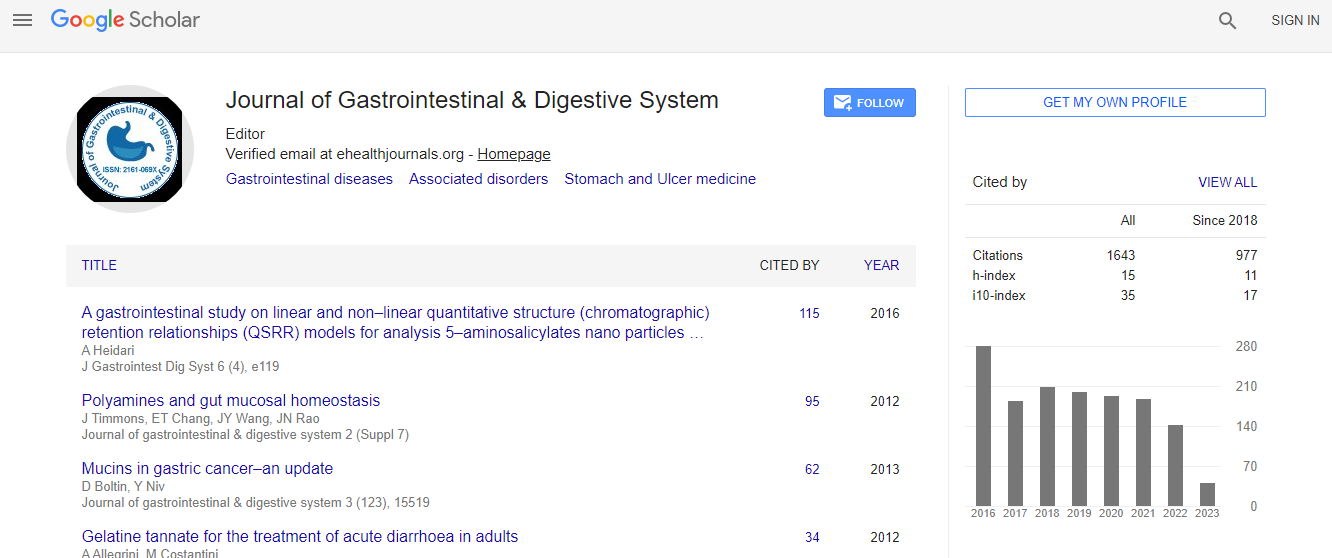Review Article
Back to Basics: Regulation of the Gastrointestinal Functions
Ayman I Sayegh* and Martha C WashingtonGastroenterology Laboratory, Department of Biomedical Sciences, College of Veterinary Medicine, Tuskegee University, Tuskegee, Alabama, USA
- *Corresponding Author:
- Ayman I Sayegh
Gastroenterology Laboratory
Department of Biomedical Sciences
College of Veterinary Medicine
Tuskegee University
Tuskegee, Alabama, USA
E-mail: sayeghai@mytu.tuskegee.edu
Received date: December 12, 2012; Accepted date: December 14, 2012; Published date: December 17, 2012
Citation: Sayegh AI, Washington MC (2012) Back to Basics: Regulation of the Gastrointestinal Functions. J Gastroint Dig Syst 2:118. doi: 10.4172/2161-069X.1000118
Copyright: © 2012 Sayegh AI. This is an open-access article distributed under the terms of the Creative Commons Attribution License, which permits unrestricted use, distribution, and reproduction in any medium, provided the original author and source are credited.
Abstract
The gastrointestinal tract is a tube like structure which extends from the mouth to the anus and supplies the various body systems, including itself, with nutrients, electrolytes and water through performing five functions. These functions include digestion, secretion, absorption, storage and excretion. To orchestrate these functions there are two control systems located inside and outside the gut wall. The intrinsic ones include the enteric nervous system and five hormones including secretion, gastrin, cholecystokinin, gastric inhibitory peptide and motilin and the extrinsic control system of the gut include the vagus and splanchnic nerves and the hormone aldosterone. This review describes the previous systems and their roles in the control of the various functions of the gut.

 Spanish
Spanish  Chinese
Chinese  Russian
Russian  German
German  French
French  Japanese
Japanese  Portuguese
Portuguese  Hindi
Hindi 
